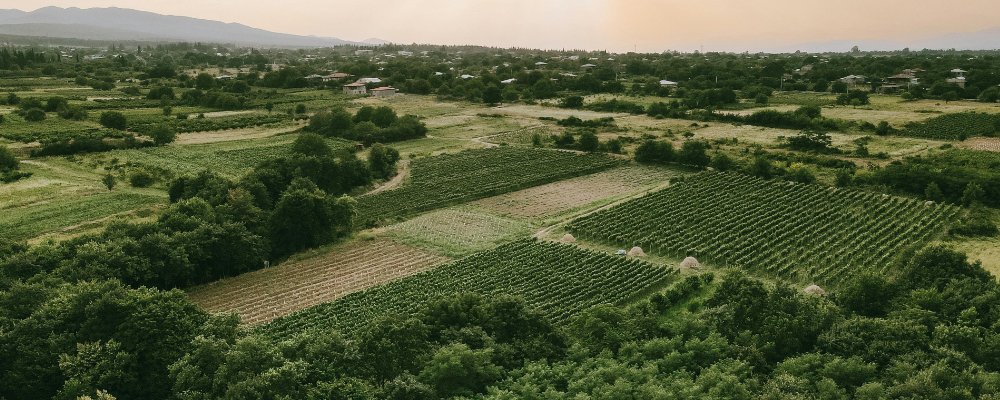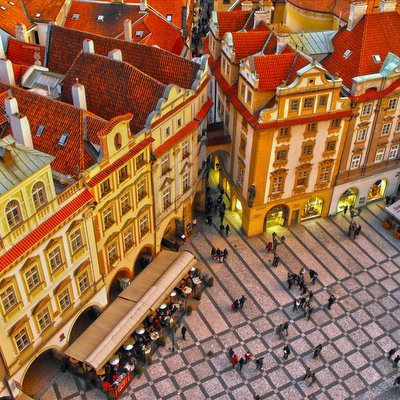One of the oldest wine-producing countries globally, Georgia's wine production began about 8 thousand years ago during the New Stone Age, when the world's first vintners would stomp on bunches of red and white grapes in a big wooden trough. This liquid flowed into an egg-shaped earthenware pot—narrow at the bottom and wide at the top—known as a 'qvevri' that has been used for eons storing wine while it ferments. The stems, skins, and seeds were put in after the juice, and a stone lid sealed the jar. These clay jars were buried in the ground, leaving only the rim of the top showing. After several months of fermentation, the lid was removed, and the wine would be drunk. Their labor produced a red or amber wine with a dry, tannic, and savory taste.
These old 'oenophiles' (someone who loves wine but without any formal training), according to archeologists, would have drunk their wine any day and all day, not just as a celebratory drink, but with each meal of wild boar or the like that they could catch. This nectar of the gods would have permeated every aspect of their lives, including medicinal practices and religious occasions. Near Tblis, archeologists found fragments of these jars decorated with drawings of wine festival shenanigans, such as men dancing and stomping on grapes. They believe this is evidence of man's first wine-making efforts from grapes, using domesticated wild-growing Eurasian grapevines. Today, many grapevines globally—think between 8,000 to 10,000 varietals—can be traced back to their roots in Caucasia—the mountainous region between the Black Sea, the Caspian Sea, and where you will find Armenia, Azerbaijan, Russia, and Georgia.

Georgia offers a rainbow spectrum of delicious wine, from red and white to pink, orange (amber), black, and green. However, the country is probably best known for its traditional amber wines, which get their color from being fermented on grape skins. Amber wines are dry wines with hints of golden apple, nuts, honey, and a whisper of savory notes touched with herbs and orange zest. They quite often smell like exotic white wines.
Georgia’s red wines are like having a mouthful of velvet, similar to the magical taste of Malbec with the intoxicating aroma of a Syrah and the hint of a fresh Sangiovese. The icon of Georgia’s red wines is ‘Saperavi', which entices your tastebuds to quiver in anticipation of intense dark fruits (plum and blackberry) with the added innuendo of spices and chocolate. While the sweet reds burst with the flavor of cherries and are high on the drinking list for many Georgian wine aficionados—lightly chilled, they marry with rich and spicy grilled meat or matured cheese.
The leading white varietal in Georgia is ‘Rkatsiteli', an aromatic wine loaded with tropical fruit and herb nuances that is great to scoff when indulging in Indian, Middle Eastern, and Asian cuisines. Black wines are overloaded with toasty flavors, blackberries, beet, spice, and vanilla, giving a smooth taste in the mouth, especially when accompanied by cheese or fatty meats and fried vegetables. Green wine gets its color from synthesizing the pigment of Kisi orange wine using the traditional method of fermenting in a ‘qvevri.' The taste of apricots and nuts combined with apple and peach gives you a mouthful of freshness. With explosions of well-balanced raspberry and cherry and a subtle sweetness, Georgia's pink wines are stunning coral salmon in color, smelling like a mass of white flowers and cranberries.
Georgia, the country, is literally smothered in vineyards, both large and small, as most of the land is capable of wine production; even single households create their own wine for personal use. Today, the wine scene of Georgia, which was brought to its knees under soviet occupation, is recovering, with lost varietals being rediscovered and micro wine producers passionately bottling small vintages of rare wines, creating a cult wine mentality—sipping such delicious drops cost a small fortune. Wine is the heart of Georgian culture.

Georgia's most prestigious wine region is Kakheti, which can be reached from Tbilisi for a day's visit. But, it's advised to make the most of your days amidst the vineyards and spend 3 to 4 days exploring. The second-largest wine region is Imereti in West Georgia, where you can fly straight into the capital of Kutaisi for a wine-soaked retreat. Good quality sparkling wines can be found in Shida Kartli and Mtskheta; some wine-growing areas are only about ten minutes outside of Tbilisi, which makes it easy to pop into a vineyard rather than spend hours in a car or bus for an excellent afternoon tipple. For wines to rival the famous Kakheti, head to the area of Bolnisi, established by German colonists in 1818. The Racha and Lechkhumi region is not just for sipping wine. You can hike the mountains, visit small artisan winemakers, and stay in the picturesque valley of Ambrolauri. Lesser-known wine regions include Samagrelo and Guria, where the Soviets grew tea rather than wine, which is making a comeback to the wine industry. Undeveloped for wine tourism, the Meskheti wine region is home to high-altitude vineyards where unique wine tastings and a lesson in Meskhetian cuisine of dried beef, snails, and Tenil string cheese are on offer in specialized tours. Lastly, there is the Adjara wine region, with a few wineries dotted inland from the Black Sea, and where small wineries can be found clinging to steep valley walls.
Georgia is blanketed with grapes clinging to vines.
Gail Palethorpe, a self proclaimed Australian gypsy, is a freelance writer, photographer and eternal traveller. Check out her website Gail Palethorpe Photography and her Shutterstock profile.















